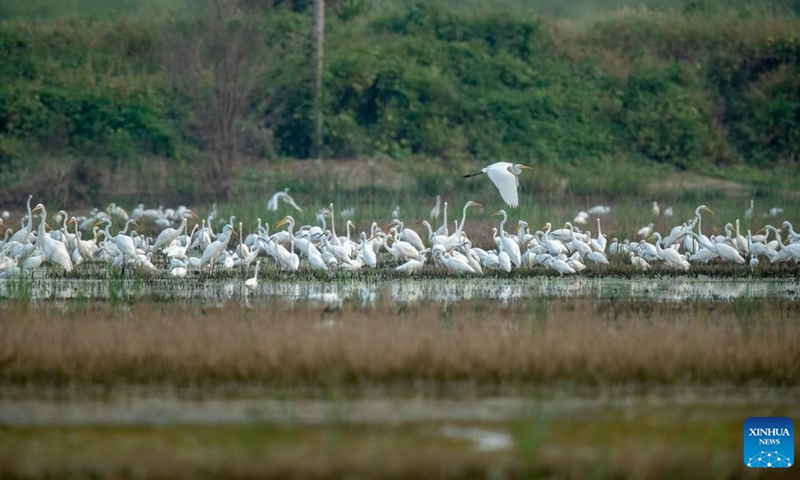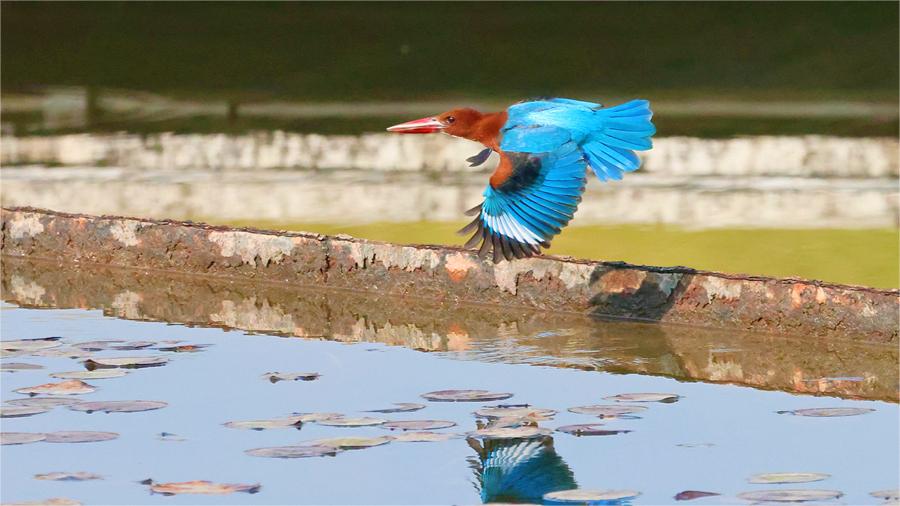China issues biodiversity conservation strategy action plan to scientifically guide management

Photo taken on September 9, 2022 shows a flock of wild birds in Baiyangdian Lake in Xiong'an New Area, north China's Hebei Province. Photo: Xinhua
China’s Ministry of Ecology and Environment on Thursday issued the China National Biodiversity Conservation Strategy and Action Plan (2023-30), as part of the efforts to implement the Kunming-Montreal Global Biodiversity Framework, and a scientific guide to comprehensively improve the level of biodiversity management in the country, according to the ministry.
The Kunming-Montreal Global Biodiversity Framework was adopted at the UN biodiversity conference, COP15, in December 2022, aimed at reversing biodiversity loss and setting the world on a path of recovery.
The action plan has stated China’s strategy for biodiversity conservation in the new era, and has deployed four priority areas including biodiversity mainstreaming, addressing threats to biodiversity loss, sustainable use, sharing of biodiversity, and modernizing biodiversity governance, said the ministry.
Each priority area includes six to eight priority actions, covering a wide range of content including laws and regulations, policy planning and sustainable management of biological resources.
China has expansive territory, along with its distinctive natural geographical environment and diverse climate types, which stands as one of the most biodiverse countries globally.
China has 135,061 species, including 65,362 species in the animal world, and 39,539 plant species, according to the action plan.
However, China’s biodiversity is also threatened by factors consistent with global biodiversity loss, such as the loss and degradation of natural habitats, over-exploitation of natural resources, environmental pollution, invasive alien species, and climate change. Ecosystems, species, and genetic diversity in the country have all been experiencing different degrees of degradation or loss, according to the plan.
China is one of the first countries to sign on to the Convention on Biological Diversity, and makes noteworthy contributions in addressing the global challenge of biological diversity.
China has issued a batch of more than 40 policy documents related to the construction of ecological civilization, and released or revised more than 30 laws and regulations on protection of environment, wild animals, marine environment and other sectors, highlighting the importance of biodiversity protection.
By 2030, the relevant policies, systems, standards, and monitoring systems related to biodiversity conservation will be established. The background investigation and assessment of priority areas and strategic regions for biodiversity conservation will continue to be promoted, and the national biodiversity monitoring network will be basically built, according to the action plan.
At least 30 percent of degraded ecosystems in terrestrial, inland water, coastal, and marine areas will be effectively restored by 2030, said the plan. According to the plan, the minimum area designated for land ecological protection red line should be 30 percent of the total land area, while the minimum area for marine ecological protection red line should be 150,000 square kilometers.
The Communist Party of China Central Committee and the State Council have issued guidelines to comprehensively promote the development of a “Beautiful China.” The guidelines urged efforts to strengthen law enforcement, protection, and restoration, maintaining the national ecological protection red line area above 3.15 million square kilometers.
Photos
Related Stories
- China mulls revising law to boost marine biodiversity
- UN biodiversity official urges implementation of Kunming-Montreal framework
- Biodiversity in China's Taihu Lake continues to see improvement
- China launches action plan to prevent invasive alien species through border ports
- China in process of updating national biodiversity strategy, action plan
- Beijing's biodiversity flourishes through enhanced wildlife protection
Copyright © 2024 People's Daily Online. All Rights Reserved.









